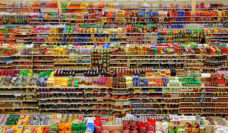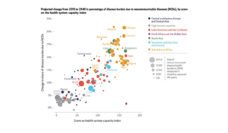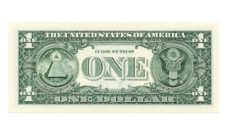Eduardo (age 57) worked as a nurse until his diabetes worsened and he lost his vision. He now lives alone, subsists off disability, Supplemental Nutrition Assistance Program (SNAP; formerly Food Stamps), and Medicaid benefits, and is visited by home health aides seven days a week who cook all his meals and take him to his many doctor’s appointments. In the time I spent interviewing Eduardo, his attention to the management of his chronic illness was palpable. However, buying the low-carb foods and fresh fruits and vegetables suggested by his dietician was expensive. And the store with a better stock of his diet-specific foods had higher prices and was far from his house.
As a result, Eduardo said he typically ran out of SNAP within two weeks of receiving his benefits, if not before. At these times–when he was out of SNAP and trying to spend as little money as possible–he would eat 99-cent cans of chicken noodle soup. He knew the cans of soup were not good for his health–they were high in sodium, potentially causing high blood pressure and causing his sugar levels to be uncontrolled. But, to make sure he had some food in his system, he ate soup and, as he put it, “You survive. But then on the other hand my health is not surviving.”
SNAP is the largest federal program targeted at alleviating food insecurity and serves one in seven US residents. SNAP benefits are disbursed only once per month and, as days and weeks progress after SNAP distribution, diet quality declines, participants restrict their calories and increasingly skip meals. All of these coping strategies have detrimental impacts on diet-related chronic diseases.
Drawing from nearly 50 hours of in-depth qualitative interviews with SNAP participants, my colleagues and I recently published an article highlighting the dual burden of poverty and chronic disease. Our study documents the particular challenges SNAP households with diet-related chronic diseases face in getting sufficient and high-quality food to maintain a healthy diet throughout the benefit month.
While increasing the SNAP budget is a politically challenging proposition, a strong investment in food security has the potential to both reduce government medical spending and improve population health.
Eduardo’s story illustrates the experiences of many SNAP recipients. Like Eduardo, all of the families with whom we spoke said their benefits did not last for the full SNAP benefit month, making it challenging to afford foods that enable disease management. This included the ability to afford sufficient calories for weight or blood sugar maintenance, as well as more expensive, specialized diet foods (for example, gluten-free alternatives). Running out of SNAP at the end of the month also impacted self-management of chronic disease, as the emphasis in those final weeks of the benefit month was on staving off hunger, rather than eating a healthy diet. Our findings highlight the degree to which SNAP participants struggle to maintain health in times of financial shortfall.
Chronic disease self-management and outcomes among the SNAP population remain critically understudied, despite higher rates of chronic disease mortality among SNAP participants than among both income-eligible and higher-income non-participants. Recent attention in the popular press has highlighted how important food is for health. The ‘food is medicine’ approach has demonstrated the benefit of food interventions, including SNAP benefits, on lowering healthcare expenditures, improving medication adherence and reducing chronic disease morbidity.
Our study further highlights the critical importance of food in promoting health and suggests that interventions to subsidize healthy purchases or increase SNAP benefits could significantly improve the ability of low-income Americans to manage chronic disease. While increasing the SNAP budget is a politically challenging proposition, a strong investment in food security has the potential to both reduce government medical spending and improve population health.
Image by Jill Wellington from Pixabay














